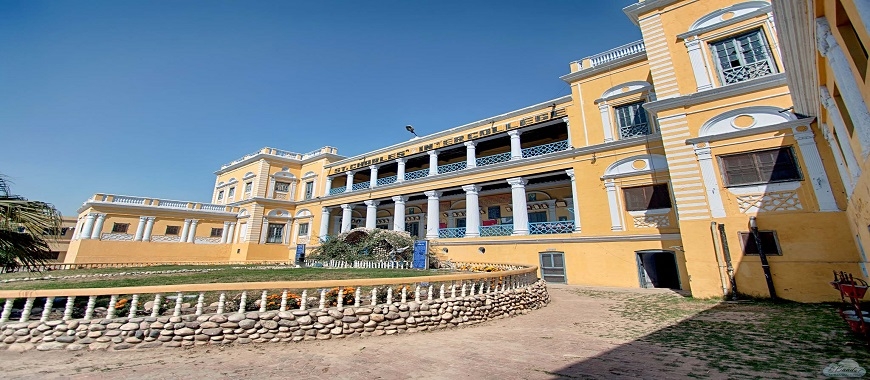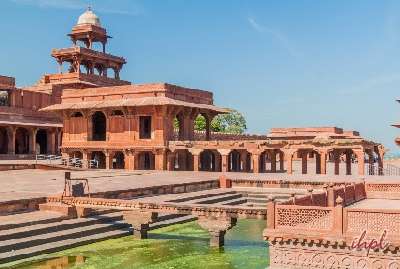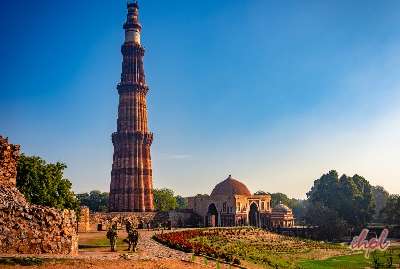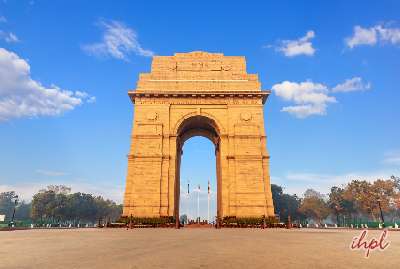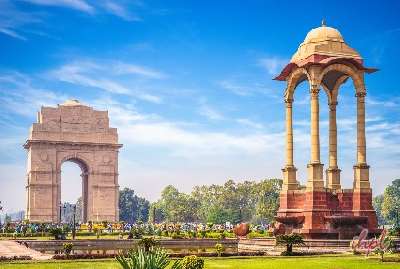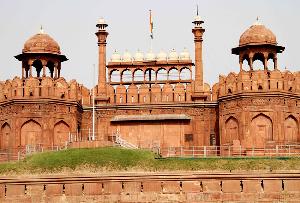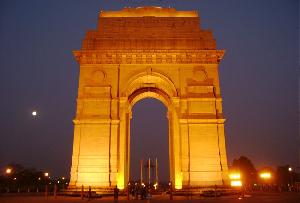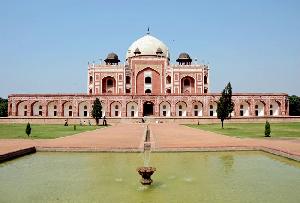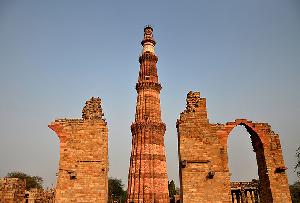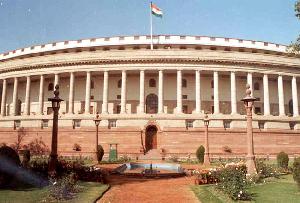Commonly known as the Bhagirath Palace and North India’s biggest electrical goods wholesale market, Begum Samru’s Palace was originally owned by a witty Kashmiri Muslim woman, Begum Samru. Born in 1753, Begum Samru pompously lived in this mammoth white mansion that was considered one of the grandest houses in Delhi with huge columns and large rooms. Such was her authority that Mughal Emperor Shah Alam called upon her trained private army when required. Begum Samru married an English mercenary soldier from Luxembourg named Walter Reinhard, who was lovingly called Sombre by his friends because of his long brooding face and thus the title Samru was derived and became locally popular.
Description
Begum Samru’s Palace, formerly known as Dilkusha Kothi, was built in 1822 by the Begum. A splendid flight of steps marks the palace, forming the entrance and extensive grounds. Covering an area of 75 acres, the palace now houses the St. Charles’ College.
How to reach
To reach Begum Samru’s Palace, you can fly down to the Indira Gandhi International Airport in Delhi. You can either avail of local buses from various points within the city to reach the monument, or hire auto-rickshaws and taxis or take the metro rail from Delhi Main Metro station. The nearest railway station is the Old Delhi Railway Station.
Life of Begum Samru
Commonly known as the Bhagirath Palace and North India’s biggest electrical goods wholesale market, Begum Samru’s Palace was originally owned by a witty Kashmiri Muslim woman, Begum Samru. Born in 1753, Begum Samru pompously lived in this mammoth white mansion that was considered one of the grandest houses in Delhi with huge columns and large rooms. Such was her authority that Mughal Emperor Shah Alam called upon her trained private army when required.
When she was in her early teens, Begum Samru married an English mercenary soldier from Luxembourg named Walter Reinhard who was holder of the fief of Sardhana in Meerut district. He was lovingly called Sombre by his friends because of his long brooding face and thus the title Samru was derived and became locally popular.
After the death of her husband, the Begum converted herself to Christianity for strategic and personal reasons in Agra in 1781 and managed the fief tactfully. Her new name became Joanna, but she remained popular as Begum Samru in the region. Under her administration the Begum Samru’s Palace, named then as Dilkusha Kothi, was built in 1822. She was also well-known in the European social circle for organizing opulent social gatherings at her residence in the early 19th century. Begum Samru died in 1836.
Fast – Facts:
Commonly known as the Bhagirath Palace and North India’s biggest electrical goods wholesale market, Begum Samru’s Palace was originally owned by a witty Kashmiri Muslim woman, Begum Samru. Following are some fast facts about Begum Samru’s Palace –
Location
Begum Samru’s Palace can be reached by taking the road just before the Kumar Cinema Hall on the main Chandni Chowk Road when approaching from the direction of Red Fort in Old Delhi.
Time to Visit
Open on all days of the year, round the clock, but preferably be there between sunrise and sunset. There is no admission fee, as it is open to all. It takes about an hour exploring this historic palace.
How to Reach
To reach the Begum Samru’s Palace, you can fly down to the Indira Gandhi International Airport in Delhi. You can either avail of local buses from various points within the city to reach the monument, or hire auto-rickshaws and taxis or take the metro rail. The nearest functional Metro station is Delhi Main, while the nearest railway station is the Old Delhi Railway Station.
Nearby Places to Eat
Some of the popular eat-outs near Begum Samru’s Palace are Karim Hotel, Ghantewala sweet shop, Paranthewali gali, Natraj hotel, Chor Bizarre of Broadway Hotel, Daryaganj’s Flora, Peshwari, Moti Mahal Restaurant, etc.
Nearby Attractions
Following are some of the famous tourist attractions near Begum Samru’s Palace –
Red Fort:
Also known as Lal Qila, this fort was built by the Mughal Emperor Shah Jahan after he transferred his capital to Shahjahanabad from Agra in 1638.
Jama Masjid:
The largest mosque of India, built by Shah Jahan, Jama Masjid was originally called Masjid-i-Jahanuma.
Chandni Chowk:
One of the oldest and busiest markets in Delhi, it has a variety of shops selling books, clothing, leather goods, etc.
Salimgarh Fort:
Built in 1546 on an island of River Yamuna by Islam Shah Suri, son and successor of Sher Shah Suri.
Kashmiri Gate:
One of the important gates of Shahjahanabad as the royal processions of emperors used to pass through the gate on their trips to Kashmir or northern India.
St James Church:
Consecrated in 1836, this beautiful church built by the Colonel James Skinner was said to be an imitation of St Paul’s Cathedral in London.
Dara Shikoh Library:
Constructed by Shah Jahan’s chosen successor Dara Shikoh is the Dara Shikoh Library of the Department of Archaeology, Delhi Administration.
Lothian Cemetery:
Located on Lothian Road, it is the first British cemetery of Delhi.
Raj Ghat:
The most popular memorial in Delhi, it was set up in honor of the Father of the Nation – Mahatma Gandhi.

